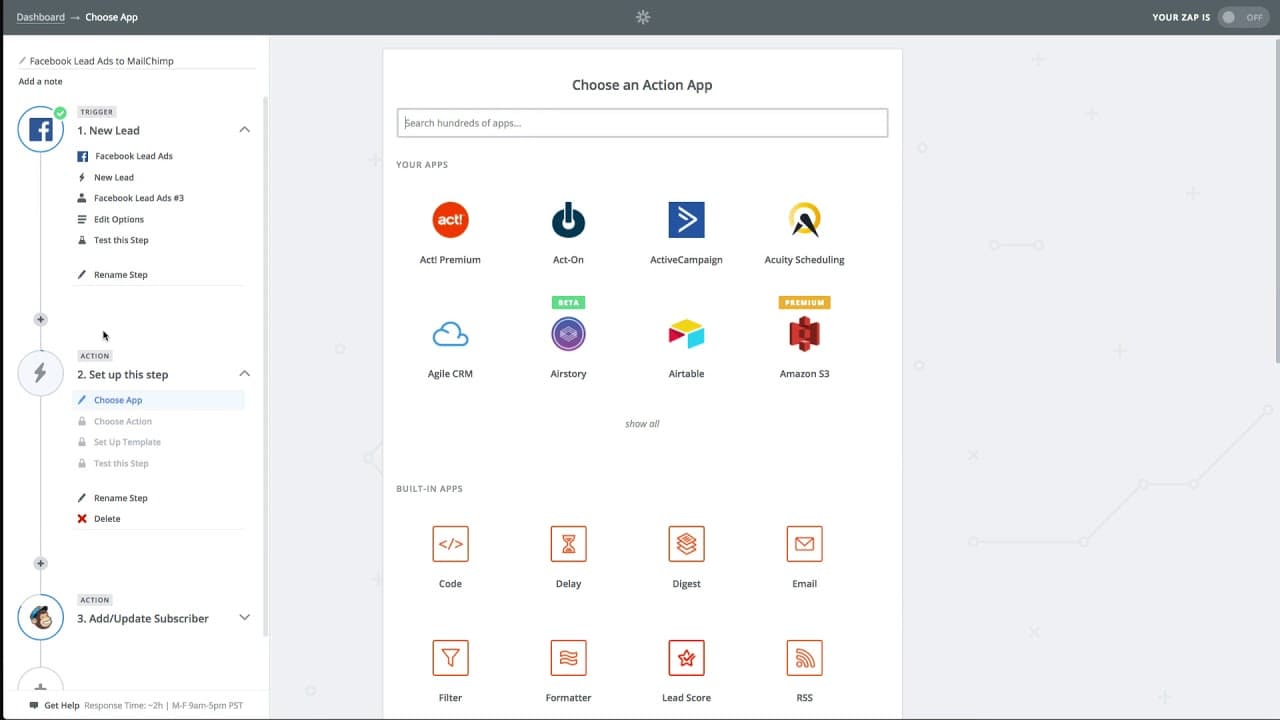How to create a paid Mailchimp newsletter

Email newsletters are key to any marketing strategy - they're so important in fact, access to members-only email newsletters is the only benefit for many of our customers who run membership sites. A paid newsletter is a type of email subscription where subscribers pay a fee to receive exclusive newsletter content, allowing content creators to monetize their work.
Brian Krogsgard, WordPress expert and owner of Post Status, told us “it’s important to consistently feed members content via email. Email is our most powerful medium, and we need to make those emails consistent and make them count.
"It’s easy for a customer to forget about your site if you aren’t emailing them to let them know what’s new and what they should be participating in.”
According to WPBeginner, as your email list gets larger you can run into issues like landing in spam folders and seeing low deliverability rates if you’re not using a third-party newsletter service, so if you’ve decided to go with Mailchimp, you’re heading in the right direction.
What is MailChimp: Email marketing basics
Let's start at the start: what is MailChimp? The platform's email marketing features let you promote and sell products or services. Here are some steps to help you get started:
Build an email list: Create a subscriber list by collecting email addresses from interested individuals. You can do this through your website, social media platforms, or by offering incentives like exclusive content or discounts.
Create engaging content: Craft compelling email campaigns with valuable content that resonates with your audience. Provide useful information, promotions, discounts, or exclusive offers to encourage recipients to open and engage with your emails.
 Using MailChimp to create engaging email designs © mailchimp.com
Using MailChimp to create engaging email designs © mailchimp.com
Promote products or services: Include relevant product or service recommendations within your email campaigns. Showcase new offerings, highlight their benefits, and provide clear calls-to-action that lead recipients to your website or online store.
Track and analyze performance: Use Mailchimp's analytics tools to monitor the performance of your email campaigns. Track metrics such as open rates, click-through rates, and conversion rates to identify what works best and optimize your future campaigns accordingly.
Test and refine: Continuously test different email subject lines, content formats, and CTAs to improve your email marketing performance. A/B testing can help you identify what resonates best with your audience and optimize your campaigns for better results.
More advanced email marketing techniques
Getting into the swing of it? Here are few next-level techniques that can really expand your Mailchimp newsletter marketing efforts and skyrocket the engagement and reach of your membership:
Segment your audience: Divide your email list into segments based on specific criteria such as demographics, interests, or purchase history. This allows you to send targeted emails tailored to each group, increasing the chances of conversions.
 One of the Mailchimp automation flows © mailchimp.com
One of the Mailchimp automation flows © mailchimp.com
Use automation: Utilize Mailchimp's automation features to set up email sequences that are triggered by specific actions or events. For example, you can send a series of welcome emails to new subscribers or follow-up emails after a purchase.
Offer exclusive deals or discounts: Reward your subscribers by offering exclusive discounts, early access to sales, or special promotions. This can help drive sales and foster customer loyalty.
Upsell and cross-sell: Once you have an established customer base, leverage email marketing to upsell or cross-sell additional products or services. Recommend related items or offer personalized recommendations based on their past purchases.
Integrations for membership and beyond
Perhpas the final step in email marketing wizardry is integrating with other platforms. If you have an online store, consider integrating Mailchimp with your e-commerce platform as this allows you to sync customer data, track purchase behavior, and send targeted emails based on customer interactions with your website. Or if you have a membership-powered business, consider integrating your Mailchimp newsletter with your membership software.
 The MailChimp integration flow © mailchimp.com
The MailChimp integration flow © mailchimp.com
Here's how to use Mailchimp to create a paid newsletter for members:
If you're sending basic payment forms
Moonclerk offers a Mailchimp integration specifically for emailing payment forms with a set of basic payment options. This is a good option if you’re interested in selling recurring plans for physical memberships or selling physical goods but aren’t as interested in the functionality for gated content and membership management.
If you’re focused on email only
Campaignzee allows users to sell recurring and one-time subscriptions for Mailchimp newsletters. This may be a good option if a paid newsletter is the only value you're offering to your members. Campaignzee works with Stripe, allows your subscribers to sign up through embedded forms, and customize your list.
If you you want more functionality and integrations
If you’re looking for how to create a paid Mailchimp newsletter, Memberful might be a good fit. When you integrate Mailchimp with Memberful, you can quickly segment your list, and automatically send out your newsletter to paying members only (or to members of a specific plan).

Plus, you can create Mailchimp Automations that send out members only content on a defined schedule. Additionally, you'll have the option to restrict access to content on your WordPress website.
Finally, you’ll have access to a dashboard where you can view membership metrics, manage members, and integrate with other community building tools like Discourse.
If you’d like a DIY solution
Zapier gives you a wide range of options for How to use Mailchimp to create connected payment systems. You’ll need to make sure you cover all the angles (like removing a member when they fail to renew), but if you have a developer handy, and have the time to create and operate a customized solution, this might be a good option for your paid newsletters.
Focus on engagement
Regardless of what option you decide to go with it’s important to start with value in mind: what can you offer via email that subscribers will find worth paying for? Anyone can send an email, but the important part of connecting with your subscribers and members is genuine human-to-human engagement. WordPress and membership plugin expert, Chris Lema, shared “the best membership plugins recognize that engagement is the key, and that means that they need to play well with the tools people use to manage and foster engagement.”
Quick tips for success
- Quality: Provide valuable content that meets the needs of your subscribers. This could include in-depth articles, expert insights, or special reports.
- Consistency: Send your newsletter on a consistent schedule to build trust. Decide on a schedule that works for you and your audience, whether it’s weekly, bi-weekly, or monthly, and stick to it.
- Engagement: Encourage interaction through polls, surveys, and feedback forms. Promote your newsletter through social media and collaborations with influencers.
- Exclusivity: Offer exclusive perks to your paid subscribers to enhance value. A common strategy is to provide a free newsletter with general content and a paid version with more exclusive, in-depth content.
FAQs: Creating a paid Mailchimp newsletter
By addressing the following FAQs, you’ll be better equipped to create and manage a successful paid Mailchimp newsletter, ensuring an enjoyable experience for both you and your subscribers.
How do I collect payments for my paid newsletter?
You can collect payments by integrating a payment gateway like Stripe or PayPal with Mailchimp. This can be done directly through Mailchimp’s integrations or via third-party tools like Zapier or Memberful.
How do I ensure my newsletter content remains engaging?
Regularly gather feedback from your subscribers to understand their preferences and interests. Use this feedback to tailor your content. Additionally, keep up with industry trends and continuously refine your content strategy to keep your newsletter fresh and engaging.
What metrics should I track to measure the success of my newsletter?
Key metrics to track include open rates, click-through rates, subscriber growth, and revenue. These metrics will help you understand your audience's engagement and the overall performance of your newsletter, allowing you to make informed adjustments.
How can I handle subscriber cancellations and refunds?
Clearly outline your cancellation and refund policies on your sign-up page. Use your payment gateway to manage cancellations and refunds efficiently. Regularly communicate with your subscribers to address any issues or concerns promptly.
Can I segment my audience for targeted content?
Yes, Mailchimp allows you to segment your audience based on various criteria such as engagement level, interests, and demographics. This enables you to send targeted content to different segments, increasing relevance and engagement.
Conclusion: How to create a paid Mailchimp newsletter
When creating a paid newsletter, your main focus should be choosing a tool that not only makes sharing content easy for you, but also helps your subscribers feel informed, engaged, and part of your community.
Remember that successful email marketing requires a thoughtful approach, a deep understanding of your target audience, and regular evaluation and refinement of your strategies. Good luck!
Subscribe for updates
Stay up to date on Memberful's latest product updates, insights, and teaching centered around growing your community.
Have an audience?
Customers like Mythical (28+ million subscribers) rely on Memberful to power their membership communities.
Get started for free